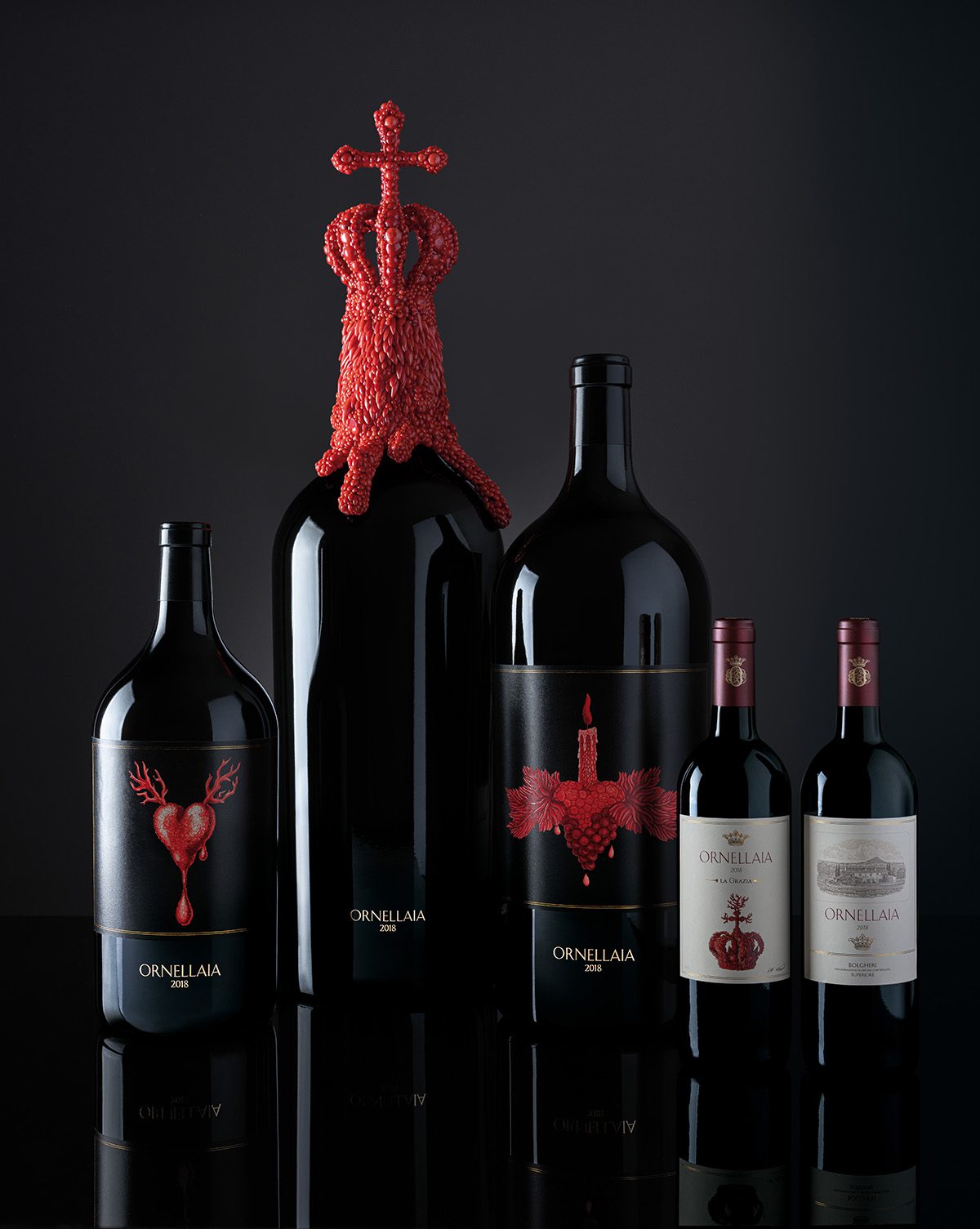
Axel Heinz is a winemaker and the estate director of Ornellaia and Masseto
Axel Heinz is Italy’s most celebrated winemaker, responsible for star Super Tuscan wines Masseto and Ornellaia, among others. Over three vintages and on Zoom, he gives Darius Sanai a private tasting and insight into what makes his estates, by the Tuscan coast, so special
If you were to meet Axel Heinz without knowing his trade, you would likely guess that he is a university professor, an academic of some kind criss-crossing his way through a cosmopolitan spiderweb of colleges. His conversation has an international feel of the old school: his perfect, lightly-accented English is pure boarding school, his manner is enquiring, sharp and kindly, all at the same time.
Follow LUX on Instagram: luxthemagazine
But Axel is not an academic, although his knowledge base and expertise would instantly see him propelled to a professorship in his relevant field. He is a winemaker, and now estate director of Ornellaia and Masseto. This means this German winemaker with an English education and French roots is responsible for the creation of two of the greatest wines our readers will know, at arguably the greatest wines estate of Italy, and among the greatest in the world. Neighbouring each other, they sit on a slight plateau sloping down to the coast of the Maremma, in Tuscany; you can see the sea from the vineyards. Behind are the forested mountains of the Colline Metallifere, which bring a coolness and freshness to the summer nights, a little like the forest leading up to the plateau de Langres does for the Cote de Nuits in Burgundy (although the Colline are higher, at more than 1000m compared to around 600m for the high ridge in Burgundy).
We always enjoy our private dinners with the ever personable, thoughtful Axel. In the current climate, we sat down with him for a tasting, one-to-one over zoom, with him at the estate in Bolgheri in the Maremma and us at the LUX office in London, of some of the great vintages of Ornellaia, sent to us directly from the estate. Below are his detailed thoughts on each wine, followed by our own reflections.

Ornellaia 2018 La Grazia Vendemmia d’Artista with label designs and artworks by Belgian artist Jan Fabre
Ornellaia 2018
Axel Heinz: I always like to taste youngest to oldest, so you know how the younger wines will develop. 2018 was a rainy year, so the wine is a bit lighter than usual, balanced and fresh. I like to use a narrower glass than most sommeliers recommend; not too wide, in order to get the best from the wine. This seems a particularly open, vibrant wine. It’s already quite delicious, even so young. I would have it with a rare bistecca alla fiorentina (Tuscan T-bone steak).
LUX: Zingy and fresh; if your idea of Tuscan wines is big, punchy beasts, think again. Quite delicate, balanced, and complex with cherries and bags of mixed herbs. Refreshing, for a super Tuscan.
Read more: How will the art industry change post-pandemic?
Ornellaia 2008
Axel Heinz: This was an astonishing vintage. It was incredibly hot all year and then there was a dramatic drop in temperature from 38 degrees to 18 degrees and it stayed that cool all through the second half of September and all of October. It means the wine has the boldness and exuberance of a very hot year, combined with the tight frame which indicates the weather in the second half of September.
The wine is 15% alcohol, but one of the pieces of magic of Bolgheri [the area where Ornellaia and Masseto are made] is that it is rich and opulent but also balanced, with refreshing acidity and a bit of firmness. It’s a privilege that we have something that saves us, which is the closeness of the sea and the cool air. Because if it were just about us keeping the alcohol level down, you would notice some under-ripeness. That’s the beauty of this place. And the refreshing acidity is part of the terroir..which means there are a few things about making wine that we are unable to explain. It may come from our closeness to the sea or the hills behind us that catch moisture and coolness.
LUX: Rich and multilayered, but still fresh; unlike other Tuscan wines from this year, it doesn’t taste of alcohol or jam. A wine for a long, stimulating, thoughtful evening with an old friend you haven’t seen for years – but with the ease at which it disappears, you will need a couple of bottles.

The Ornellaia wine estate
Ornellaia 2000
Axel Heinz: This is similar in character to the 2018, so maybe the 2018 will taste like this in 18 years. This is all about lace and silk, delicacy. I would drink it with something not overpowering, maybe mushrooms or something slow-cooked. It’s ready to drink now, but great wines plateau for a long time.
LUX: A dual-character wine, easy to drink if you feel like something that just vanishes from the glass, but interesting if you want to think about it, with that unique Ornellaia character, fresh, herbs and grilled lamb overtones, and very clean, neither too dry nor too jammy on the finish. Like the others, a unique style of wine, first made only a couple of decades ago, but destined to be one of the world’s great wines for centuries to come.
Find out more: ornellaia.com












Recent Comments